
What makes Christmas so special? Its religious significance? An intangible feeling of goodwill towards all mankind? One thing that certainly helps is that Christmas is a feast for the senses. And that’s all down to chemistry.
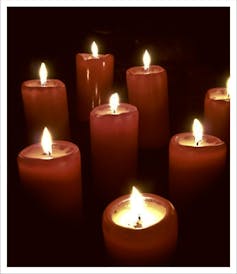
C is for candles
Carol services wouldn’t be the same with the yellow, flickering light of candles. Church candles are traditionally made of beeswax, largely esters of long-chain alcohols with both saturated acids (such as palmitic acid) and unsaturated acids (such as palmitoleic acid). The wick draws the melted wax upwards before it is vaporised and decomposed by the flame.
But it is hot, glowing, carbon-rich soot particles that give out that yellow candlelight. And the smokiness probably comes from unsaturated compounds in the wax. Cheaper candles were once made from animal fat but now most candles are made of saturated hydrocarbons produced by the petrochemical industry, so they burn with cleaner flames.
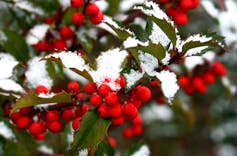
H is for holly
The spiky green leaves and bright red berries of holly make it a favourite traditional decoration. The red colour comes from a molecule in the anthocyanin family, which is widely found plant pigments. But the berries, which also serve as winter food for birds, also contain two familiar molecules: caffeine and theobromine, the molecule that makes chocolate toxic to dogs. The berries are toxic to humans too, but not as much as some once believed.

R is for Rudolph
There is actually an orange-red molecule named rudolphomycin but sadly it takes its name from a character in the opera La Bohème, not the similarly named red-nosed reindeer. It is one of a number of molecules that make up bohemic acid, which takes its name from the same source.
However, the molecule does have another Christmas link. The smallest fragment of rudolphomycin is a little sugar molecule. We all know of sugars with names ending in –ose, like glucose, sucrose (table sugar) and fructose, so it is no surprise that this fragment was given the name rednose. Rudolphomycin itself is a potential antibiotic and anti-tumour compound.
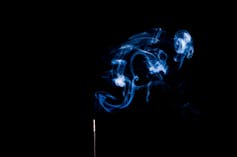
I is for incense
Famous as one of the gifts of the biblical Wise Men, the incense most associated with Christmas – frankincense – originates as a resin from the Boswellia plant. It has only recently been discovered that burning incense activates ion channels in the brain that can alleviate anxiety or depression thanks to a molecule called incensole acetate. This psychoactive behaviour suggests high mass could really live up to its name.
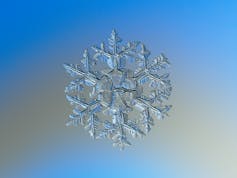
S is for snow
Snow is made of ice crystals formed from moisture in the atmosphere, which aggregate together to make snowflakes. They commonly have hexagonal structures but there is an almost infinite variety of patterns they can form, although some could appear identical to the human eye. It appears that the hexagonal structure, which reflects the underlying molecular shape of ice, forms first and then undergoes further growth from the corners. The precise pattern is affected by conditions including temperature and relative humidity.
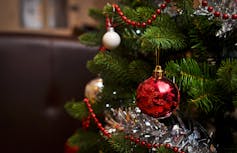
T is for tinsel
Like many Christmas customs, tinsel decorations originated in Germany but takes their name from the French “estincele” meaning sparkle. In the 19th century, tinsel was made of metal. People who could afford it used silver but for much of the 20th century it was commonly made from lead strands with a shiny tin coating, until it was phased out in the 1970s over fears the lead would poison children. Nowadays, most tinsel is composed of PVC (polyvinyl chloride) with a shiny aluminium coating. You cannot get away from metal if you want sparkle.
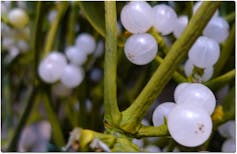
M is for mistletoe
Just like holly, mistletoe bears berries that may not be as toxic as commonly thought. In fact, the plant has long been used in medicine. Traditionally, it was used to treat headaches and seizures but doctors are now studying its use as a cancer treatment. Mistletoe contains protein molecules called lectins that are cytotoxic and can kill cancer cells, although research has yet to confirm that the plant could form the basis of a successful drug. But it may also help fight obesity-related liver disease, and contains moronic acid, which is reported to act against HIV and herpes.
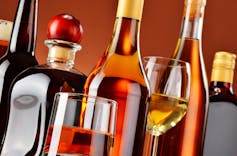
A is for alcohol
Strictly speaking, when we refer to alcohol we mean ethanol (or ethyl alcohol), which many people find an essential tool for getting through the Christmas period of sometimes forced socialising and awkward family reunions. It works by affecting the prefrontal cortex of the brain, the bit at the front which weighs up risk-taking activity. Heavy drinkers can be affected by damage to their frontal lobe and adolescents, whose prefrontal cortexes are still forming, may be particularly at risk from alcohol abuse.
The body gets rid of alcohol by first turning it into acetaldehyde (ethanal) and then into acetic acid (ethanoic acid), which can then be broken down further. Acetaldehyde is toxic and drinking too much produces more of it than the enzymes in the human body can decompose, leading to a hangover. There are all sorts of suggestions about how to reduce hangovers. The best one is not to drink so much in the first place.

S is also for sweeteners
With all that food, you may end up on a diet after Christmas, especially as so many of the foods associated with the festival are so rich in sugar. One alternative may be to use more artificial sweeteners, which are mostly synthetic molecules, although stevia is a natural sweetener derived from the South American plant Stevia rebaudiana. Much smaller amounts of these artificial sweeteners are needed for a sweet taste than sugar but they are not metabolised in the body to generate energy such as glucose. The result is that they contribute far fewer calories, although there is some evidence which suggests they can help cause obesity.
Simon Cotton, Senior Lecturer in Chemistry, University of Birmingham
This article is republished from The Conversation under a Creative Commons license. Read the original article.











